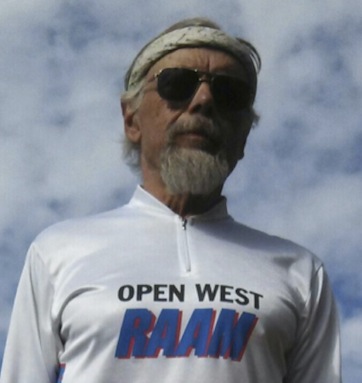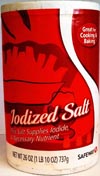Decades ago racers in the Tour de France were advised, “Avoid drinking when racing, especially in hot weather. Drink as little as possible, and with the liquid not too cold. It is only a question of willpower.” (Tim Noakes, MD, Waterlogged: the Serious Problem of Overhydration in Endurance Sports, Human Kinetics, Champaign, IL, 2012) We all know that’s bad advice. Scientists are learning more and more about hydration and sports and much of what we were taught is also bad advice.
Hydrate or Die
The average male’s body is 60% water, the average female 50% and the typical athlete has another 10% water. Obviously if we don’t replace this, we die. However, almost all of the heat-related deaths every summer are shut-ins living in homes with no AC. Your body has about 2 quarts (liters) of free water in your intestines. You don’t even start to feel thirsty until you you’ve lost 1.5 to 2 quarts of water!
More accurately: overhydrate and risk dying. Dilutional hyponatremia is a more serious problem than dehydration. That’s when you drink so much fluid that your blood sodium is diluted to a dangerously low level.
Dehydration Causes Poor Performance
Pro stage racers ride so hard that their guts can’t absorb enough fluid to replace all that they are losing in sweat. Race rules also restrict when a rider can get a bottle toward the end of a stage. Although somewhat dehydrated, the pros sprint quite well!
Dehydration Causes Cramps
Although the pros routinely get somewhat dehydrated during races we rarely read about cramps in the peloton. In lab experiments dehydration does not cause cramps.
Drink Early and Drink Often
In the mistaken belief that dehydration affects performance and causes cramps, we have been taught to drink before a ride and to continue drinking frequently during the ride. Develop the habit of drinking enough throughout the day so that you are fully hydrated — you urinate every few hours with good output — but don’t force yourself to drink on the bike.
Drink Before You’re Thirsty
We’re also told to drink before we’re thirsty to be sure we take in enough fluid. Sports scientists now recommend drinking just enough to satisfy thirst in order to avoid hyponatremia. Your body is marvelously effective at self-regulating. If you are starting to get significantly dehydrated, then your thirst mechanism kicks in.
Water Is All You Really Need
Taste your sweat — does it taste like clear water? No! In addition to replacing the water you lose in sweat you need to replace the sodium. A liter of sweat contains about 800 mg of sodium — half the recommended daily intake of sodium so after a sweaty ride don’t spare the saltshaker. A quart of your sweat also contains about 115 mg of potassium, only about 2.5% of the recommended daily intake of potassium!
Sports Drinks Provide the Necessary Electrolytes
Yes, but. The American College of Sports Medicine recommends that a drink contain 125-175 mg of sodium / 8 fl. oz. and 20-48 mg of potassium / 8 fl. oz. Most sports drinks don’t provide enough sodium, the one electrolyte you really need to replace— read the ingredients on the label of your sports drinks.
Electrolyte Depletion Causes Cramps
If you cramp, you may have been told to eat a banana for potassium or to take Tums for the calcium or to take a supplement for these electrolytes plus magnesium. The amount of each of these electrolytes in sweat is minute compared to your bodily stores and depletion of them does not cause cramps. Experts disagree whether sodium depletion causes cramps or not.
Pouring Water Over You Is Effective
Your body cools itself like your engine and car radiator. Blood flows through your core organs gaining heat and then flows through your skin producing sweat. Most of the cooling comes this way, not from your hot skin directly radiating heat to the already hot atmosphere. If you have limited water drink it, don’t dowse yourself.
Carbonated Beverages Are Bad
Carbonated beverages are absorbed just as quickly as non-carbonated ones; however, carbonated drinks may make you feel full sooner so that you drink less.
Caffeinated Drinks Cause Dehydration
The amount of caffeine in a couple of cups of coffee or tea or 3 or 4 sodas isn’t enough to cause dehydration. If you need to urinate after drinking a caffeinated beverage it’s because of the fluid you ingested.
Beer Is Good for Rehydration and Glycogen Replacement
Unlike caffeine, alcohol — even in moderation — is a diuretic. Only about 1/3 of the calories in beer come from carbs (the source of glycogen); the majority are empty calories from alcohol.
The bottom line:
- Develop the habit of drinking frequently during the day and evening so that you are fully hydrated before exercise.
- During exercise drink whenever you are thirsty, but not more.
- After sweaty exercise, particularly if your clothes are white with salt, eat salty snacks.
More Information
- Cycling in the Heat Bundle Parts 1 and 2 — 41 pages for $8.98, a 10% discount, from RoadBikeRider.com. It includes:
- Cycling in the Heat Part 1: Ride Management — How to acclimate, how to ride in the heat, what to eat and heat-related problems. 19 page eArticle for just $4.99 from RoadBikeRider.com.
- Cycling in the Heat Part 2: Hydration Management — Develop your personal hydration and electrolyte plan. 21 page eArticle for $4.99 from RoadBikeRider.com.
- Other articles by Coach Hughes from RoadBikeRider.com











